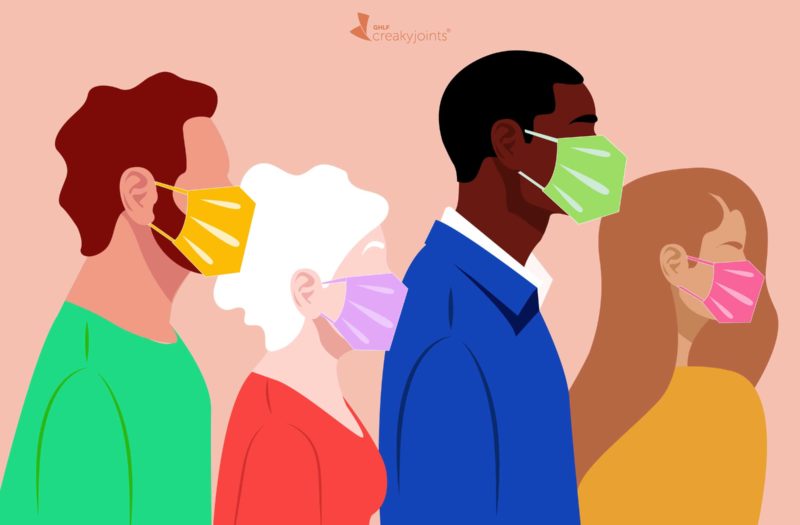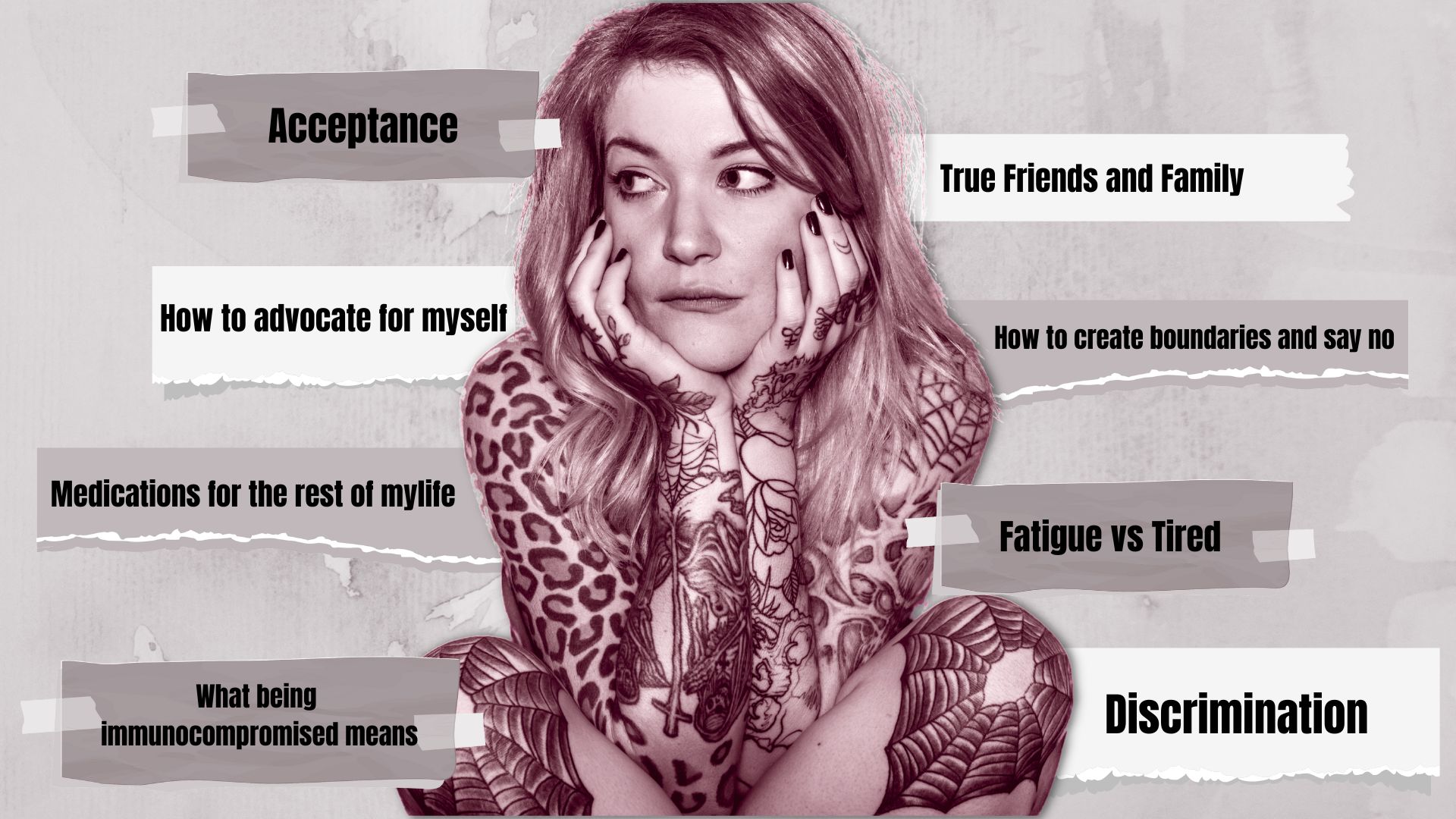Learn more about our FREE COVID-19 Patient Support Program for chronic illness patients and their loved ones.
This has been reviewed and updated as of May 13, 2020.
Face masks: There’s been no shortage of controversy around them since the coronavirus pandemic started flooding our news and social media feeds over the last two months.
Here’s what we know: N95 respirator face masks, which are named because they filter out 95 percent of very small airborne particles, including viruses, and form an airtight seal over the wearer’s mouth and nose, are still in short supply. They should be reserved for use by health care workers who are treating patients with known or suspected COVID-19 as well as by patients with known COVID-19 to reduce spreading it to others.
In public health guidance during the first few weeks of the pandemic, the U.S. Centers for Disease Control and Prevention (CDC) had stated that no one else should be wearing face masks, but in early April CDC changed its recommendations — which it still maintains — recommending that people wear “cloth face coverings in public settings where other social distancing measures are difficult to maintain (e.g., grocery stores and pharmacies) especially in areas of significant community-based transmission.”
Face masks are nothing new for CreakyJoints and the Global Healthy Living Foundation. Many of our members been wearing them for years — especially during cold and flu season — because they can be more susceptible to infections and complications. In fact, according to a recent poll of nearly 182 people on CreakyJoints Instagram page, 44 percent said they had already been wearing a mask during the pandemic before the CDC changed its recommendation.
But as economies begin to reopen in many states, the use of face masks continues to remain controversial, as some people refuse to wear them, dislike wearing them, or have issues breathing in them.
Some states have issued executive orders that require people to wear face masks when visiting essential businesses or using public transportation. Some retail chains (such as Costco) that have required shoppers to wear masks in their stores have had to fend off complaints from disgruntled customers. CNN recently reported that airlines are having trouble enforcing policies that require passengers to wear face masks while on board planes.
At the same time, Gallup poll data suggests that the recent face mask recommendations may be confusing people about their actual effectiveness.
Here is what you should know about face masks during the coronavirus pandemic if you have a chronic illness that could put you at higher risk for COVID-19 complications.
Why Face Masks Are Recommended for Preventing Coronavirus Transmission
The CDC began to recommend people wear face masks or coverings because new information had emerged about how coronavirus spreads.
“We now know from recent studies that a significant portion of individuals with coronavirus lack symptoms (“asymptomatic”) and that even those who eventually develop symptoms (“pre-symptomatic”) can transmit the virus to others before showing symptoms. This means that the virus can spread between people interacting in close proximity — for example, speaking, coughing, or sneezing — even if those people are not exhibiting symptoms,” the CDC says on its website.
This “covert spreading” may explain why this new coronavirus strain has spread across the world in such an unprecedented way. According to an analysis of patients in Singapore published Morbidity and Mortality Weekly Report, a CDC publication, presymptomatic transmission occurred one to three days before symptom onset in the presymptomatic source patient.
“Perhaps it would also be rational to recommend that people in quarantine wear face masks if they need to leave home for any reason, to prevent potential asymptomatic or presymptomatic transmission. In addition, vulnerable populations, such as older adults and those with underlying medical conditions, should wear face masks if available,” according to the authors of an article published in the medical journal The Lancet: Respiratory Medicine about the use of face masks in the COVID-19 pandemic.
Keep in mind that wearing a cloth mask will not necessarily protect the wearer of the mask from getting sick (should they be exposed to coronavirus germs). It is, on the other hand, to reduce the chances of the mask’s wearer unwittingly spreading coronavirus if they are asymptomatic.
This means that wearing a face mask should not replace other proven coronavirus prevention measures like frequent and thorough handwashing, social distancing (staying at least six feet away from others) and disinfecting frequently touched surfaces.
However, Gallup poll data suggests people may be confused about the effectiveness of face masks.
In March (before the CDC recommended that people wear face masks in public) 88 percent of Americans said handwashing is more effective than wearing surgical masks, with most of the rest (11 percent) saying they were equally effective. But in mid-April (after the recommendation changed) the percentage of U.S. adults who say handwashing is more effective dropped to just 68 percent.
While it is important to wear a face covering in public, know that wearing a face covering does not give you permission to flout social distancing guidelines or assume you are safe from coronavirus transmission.
Guidelines for Wearing Face Masks
Make sure you are familiar with any local laws or policies from businesses you may need to visit. Keep this advice in mind:
- Everyone should wear a cloth face cover when they have to go out in public, for example to the grocery store or to pick up other necessities.
- Cloth face coverings should not be placed on young children under age 2, anyone who has trouble breathing, or is unconscious, incapacitated or otherwise unable to remove the mask without assistance.
- The cloth face cover is meant to protect other people in case you are infected.
- Do NOT use a face mask meant for a health care worker, such as an N95 respirator mask.
- Continue to keep about 6 feet between yourself and others. The cloth face cover is not a substitute for social distancing.
- Do not mistake wearing a face mask for complete protection from coronavirus exposure. If you or someone you live with wears a mask to go to the grocery store, they should still wash their hands upon coming home and follow other hygiene measures (sanitizing kitchen counters, etc.)
- Make sure to remove the face mask carefully and wash and dry it thoroughly between uses.
“Homemade [masks]are not even as effective at filtering out virus as commercial surgical masks, which are not great, people should be aware that these are not protective and should not do anything you would not do without one of them on,” Donald K. Milton, MD, DrPH, a professor of environmental and occupational health at the University of Maryland in College Park, told Consumer Reports.
How to Wear a Face Mask Properly
The CDC says that face masks should meet the following criteria:
- Fit snugly but comfortably against the side of the face
- Be secured with ties or ear loops
- Include multiple layers of fabric
- Allow for breathing without restriction
- Be able to be laundered and machine dried without damage or change to shape
There are instructions on its site for sew and no-sew face masks that you can make at home.
Get Free Coronavirus Support for Chronic Illness Patients
Join the Global Healthy Living Foundation’s free COVID-19 Support Program for chronic illness patients and their families. We will be providing updated information, community support, and other resources tailored specifically to your health and safety. Join now.
Feng S. et al. Rational use of face masks in the COVID-19 pandemic. The Lancet Respiratory Medicine. March 20, 2020. doi: https://doi.org/10.1016/S2213-2600(20)30134-X.
Frequently Asked Questions about Personal Protective Equipment. Coronavirus Disease 2019 (COVID-19). U.S. Centers for Disease Control and Prevention. https://www.cdc.gov/coronavirus/2019-ncov/hcp/respirator-use-faq.html.
How to Protect Yourself and Others. Coronavirus Disease 2019 (COVID-19). U.S. Centers for Disease Control and Prevention. https://www.cdc.gov/coronavirus/2019-ncov/prevent-getting-sick/prevention.html.
Interim Guidance on Alternative Facemasks. Minnesota Department of Health. https://www.health.state.mn.us/diseases/coronavirus/hcp/masksalt.pdf.
Mandavilli A. Infected but Feeling Fine: The Unwitting Coronavirus Spreaders. The New York Times. March 31, 2020. https://www.nytimes.com/2020/03/31/health/coronavirus-asymptomatic-transmission.html.
Roberts C. What to Know Now About Masks and Coronavirus. Consumer Reports. April 1, 2020. https://www.consumerreports.org/coronavirus/do-you-need-a-mask-to-prevent-coronavirus.
Strategies for Optimizing the Supply of Facemasks. Coronavirus Disease 2019 (COVID-19). U.S. Centers for Disease Control and Prevention. https://www.cdc.gov/coronavirus/2019-ncov/hcp/ppe-strategy/face-masks.html.
Wei WE, et al. Presymptomatic Transmission of SARS-CoV-2 — Singapore, January 23–March 16, 2020. Morbidity and Mortality Weekly Report. April 1, 2020. doi: http://dx.doi.org/10.15585/mmwr.mm6914e1.






